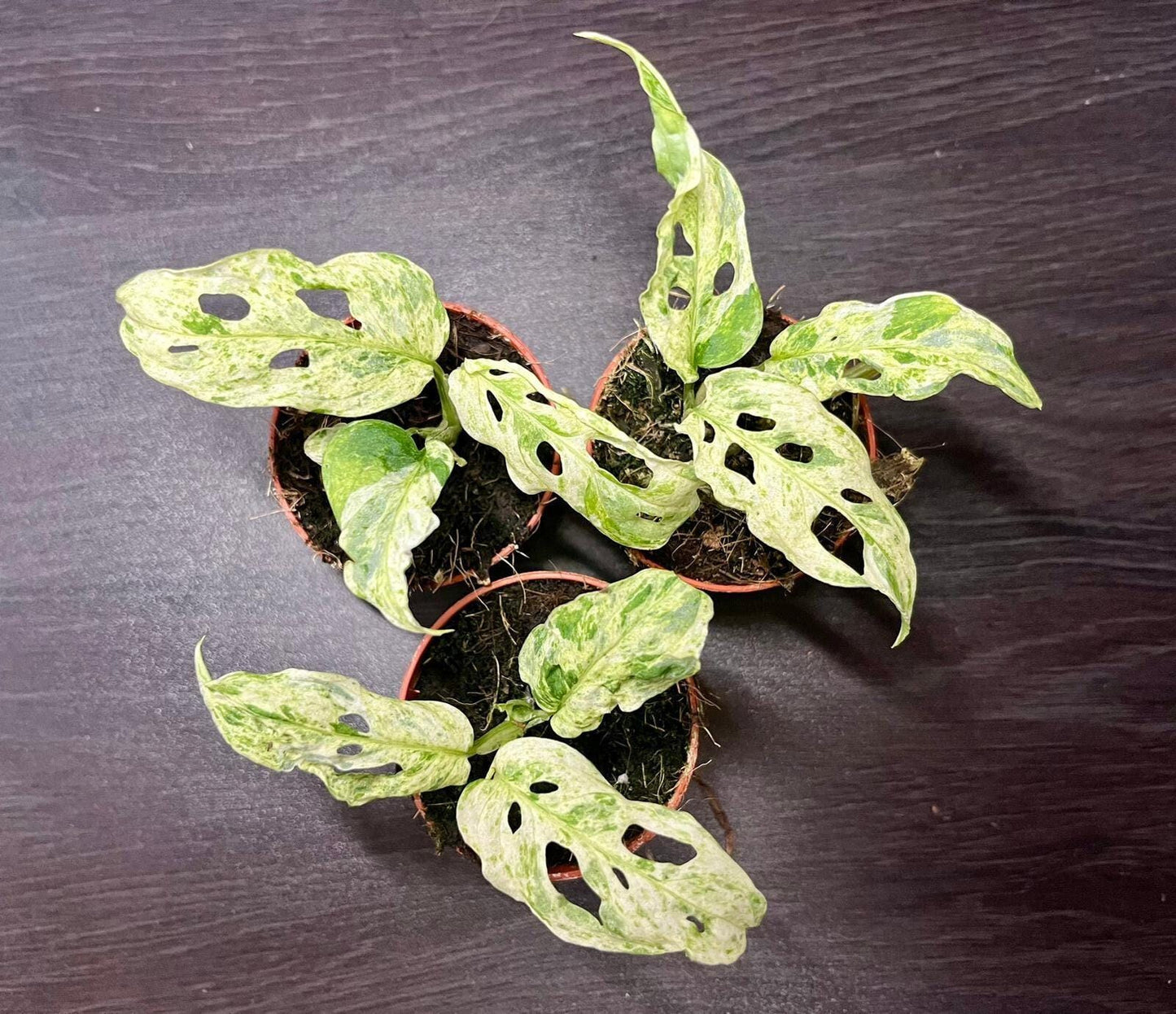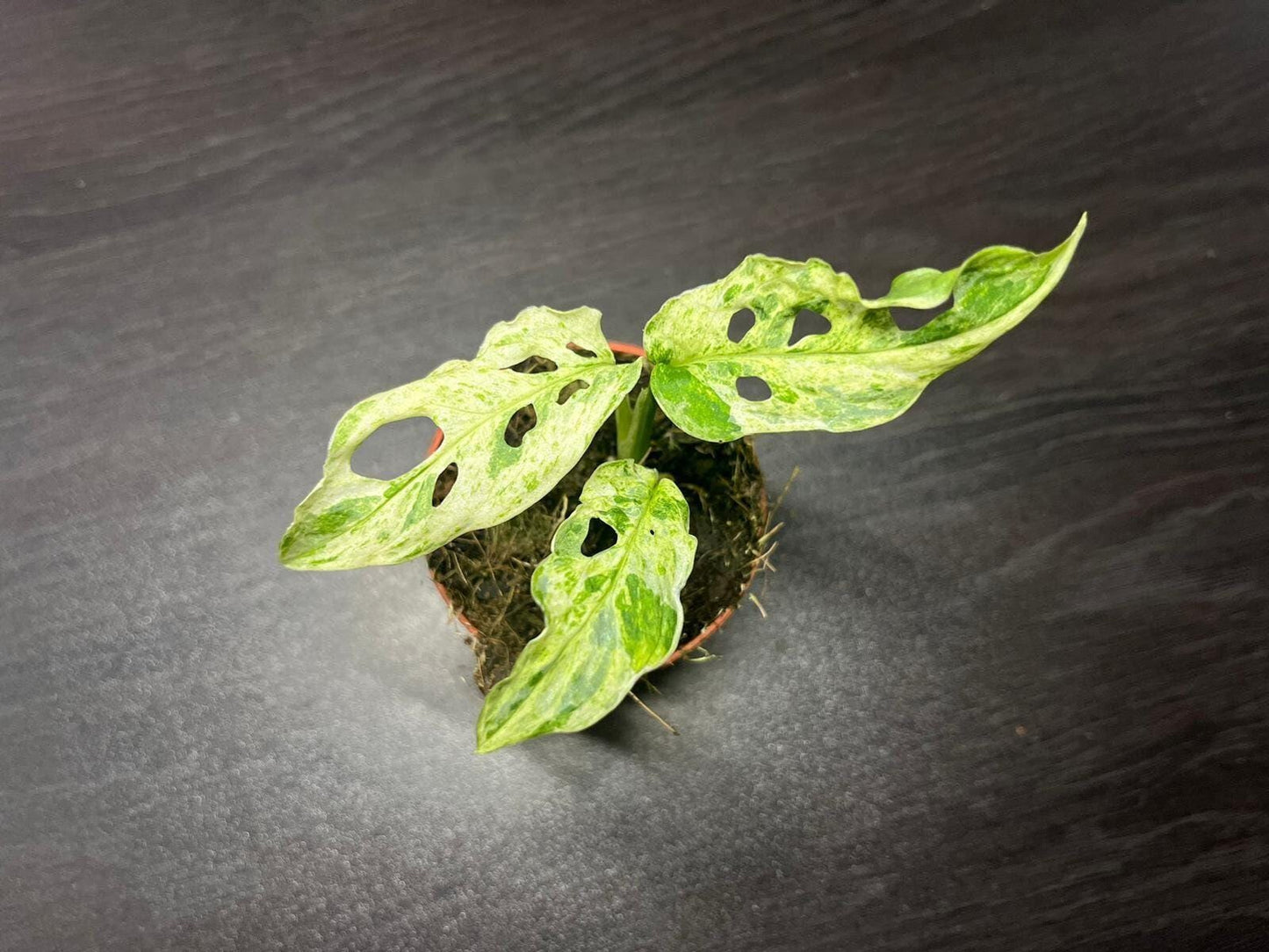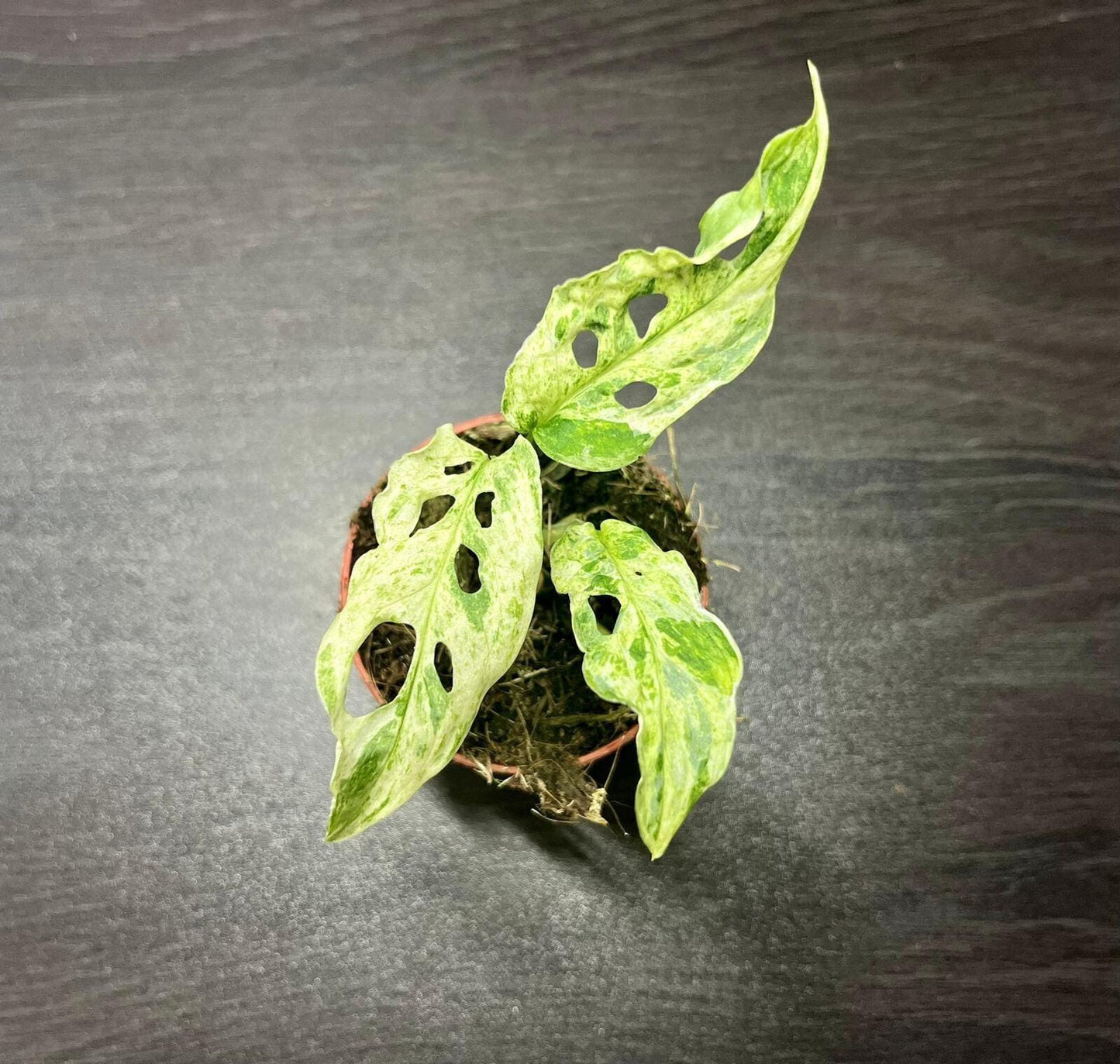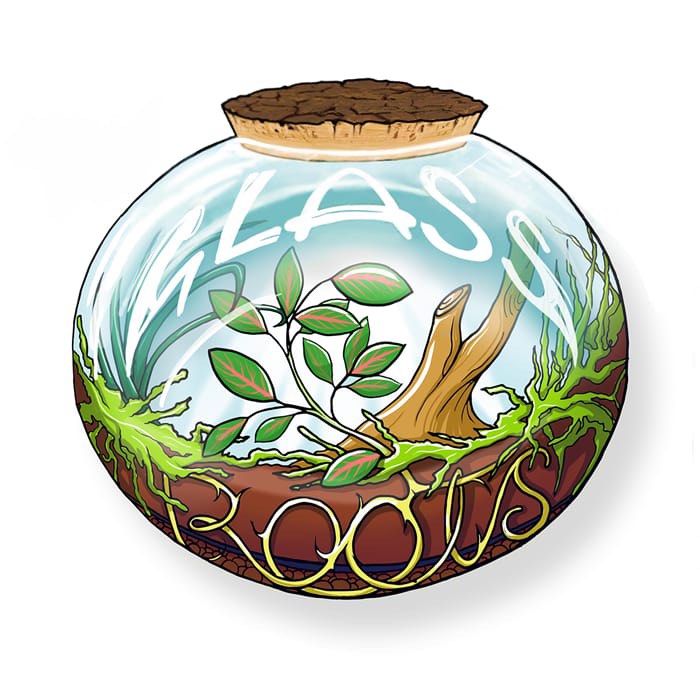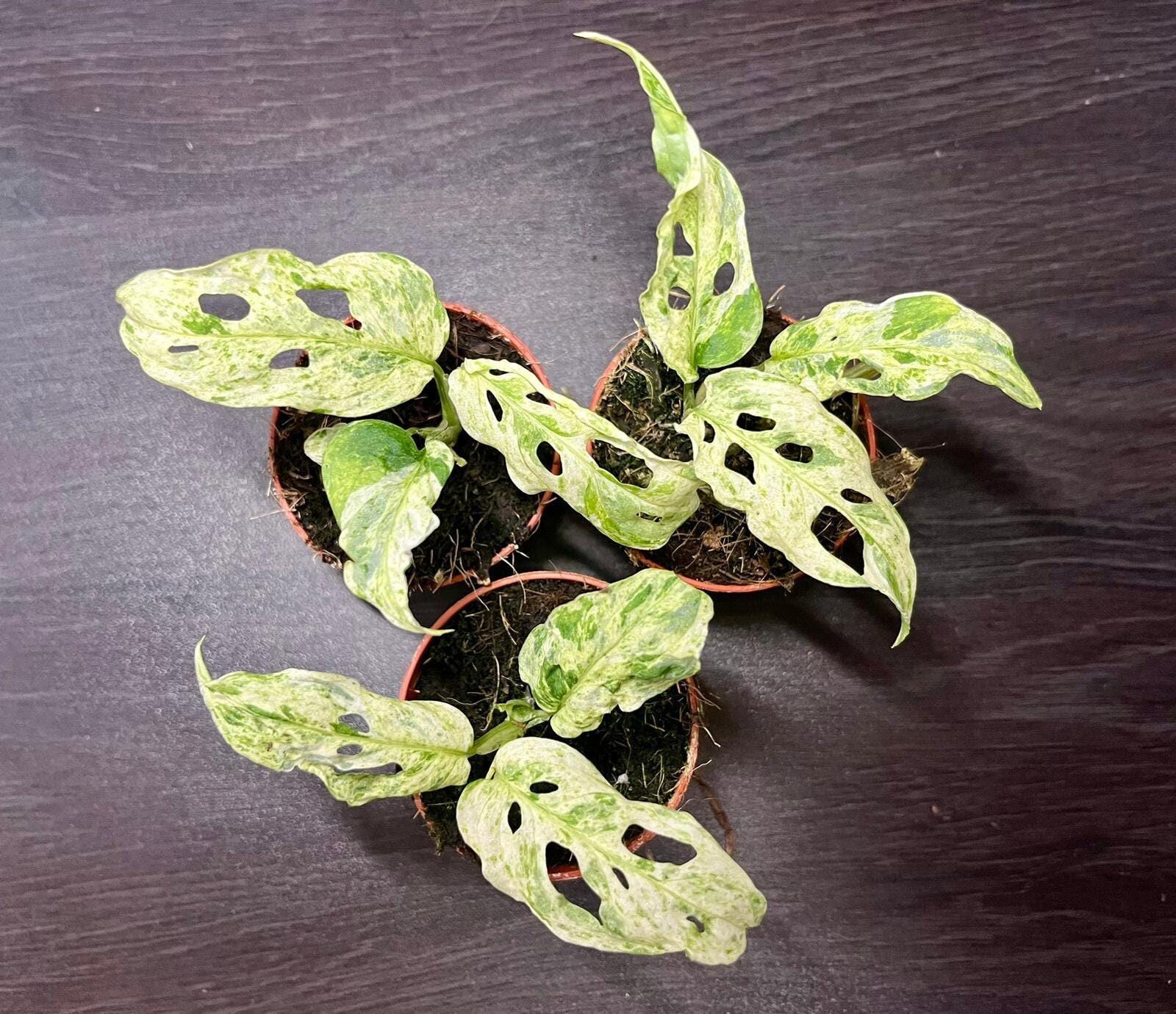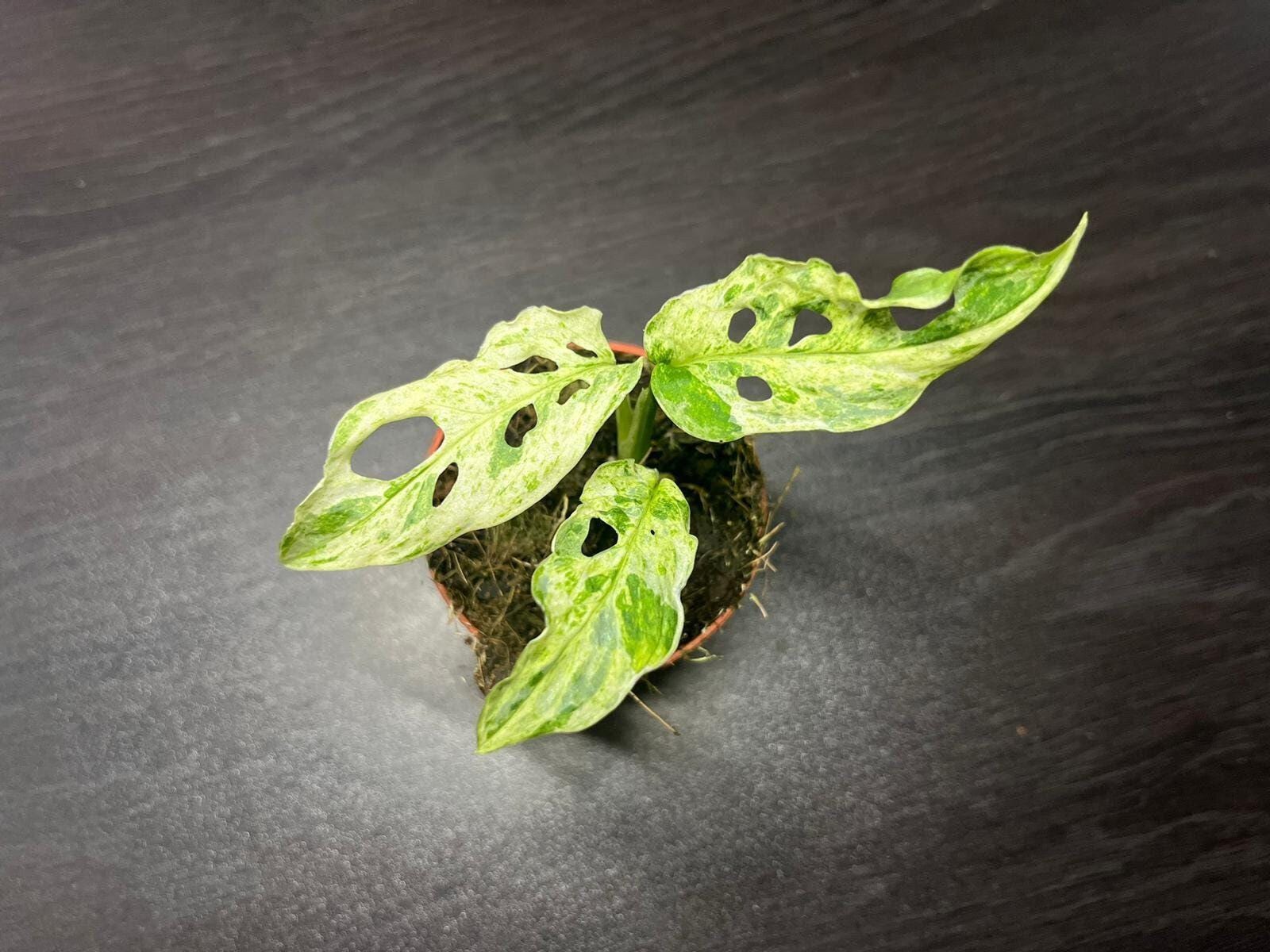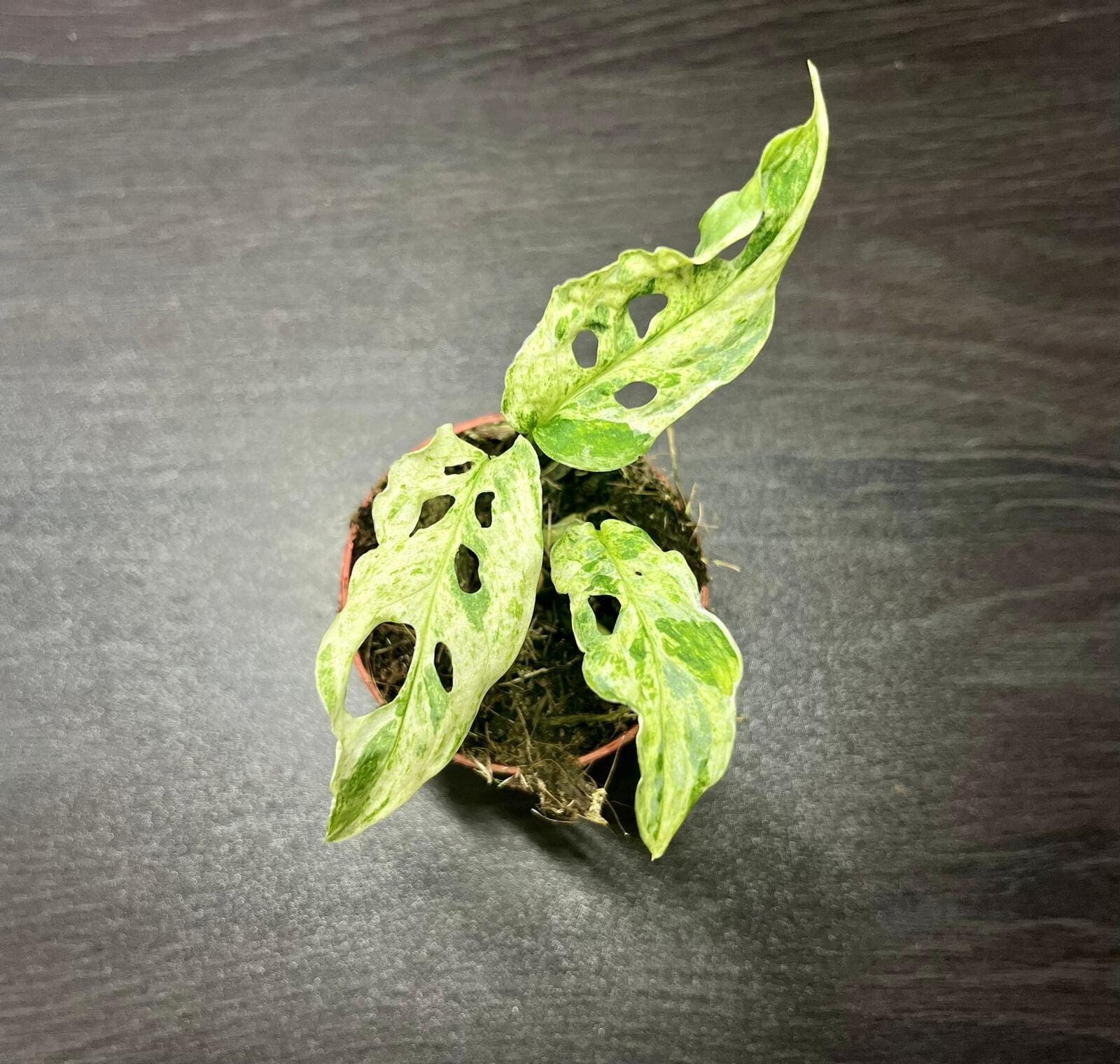Glassroots
Monstera frozen freckles 6cm pot ( variegated plant )
Monstera frozen freckles 6cm pot ( variegated plant )
Couldn't load pickup availability
1x Monstera frozen freckles in 6cm pot - Perfect size for a terrarium. Monstera 'Frozen Freckles' is a rare and captivating cultivar of the popular Monstera genus, known for its unique and eye-catching variegated foliage. This plant is a tropical perennial native to the rainforests of Central and South America, where it thrives in warm, humid environments.
Foliage:
The leaves of Monstera 'Frozen Freckles' are its standout feature. Each leaf is large, heart-shaped, and displays a stunning variegation pattern. The primary green foliage is speckled with irregular patches and spots of creamy white, resembling "frozen freckles" scattered across the leaf surface. Some leaves may even have half-moon or sectorial variegation, where large sections are entirely white or light green. The leaves can develop the characteristic Monstera fenestrations, or splits, as they mature, adding to their dramatic appearance.
Growth Habit:
Monstera 'Frozen Freckles' has a climbing growth habit, using aerial roots to attach to supports like moss poles, trellises, or other structures. When provided with proper support, it can grow quite tall, typically reaching heights of 6 to 10 feet (1.8 to 3 meters) indoors. Its spread can vary but is generally between 2 to 3 feet (60 to 90 cm). The plant's vining nature and impressive foliage make it an excellent choice for creating vertical interest in indoor spaces.
Flowers:
While Monstera 'Frozen Freckles' can produce inflorescences typical of the Monstera genus, featuring a spadix and spathe, these are relatively rare in indoor settings and are not the primary attraction. The plant is mainly grown for its ornamental foliage.
Care Requirements:
Light: Prefers bright, indirect light. Direct sunlight can scorch the leaves, while too little light can reduce variegation and slow growth. It can tolerate lower light conditions but thrives best in well-lit, filtered light environments.
Water: Enjoys consistently moist soil but does not like to sit in water. Water when the top inch of soil feels dry to the touch. High humidity is beneficial; regular misting or the use of a humidifier can help maintain the humidity levels the plant prefers.
Soil: A well-draining potting mix rich in organic matter is ideal. A mix designed for aroids, or a blend of peat, perlite, and orchid bark, works well.
Temperature: Thrives in temperatures between 65-85°F (18-29°C). It is not frost-tolerant and should be kept away from cold drafts and sudden temperature changes.
Fertilization: During the growing season (spring and summer), a balanced, water-soluble fertilizer can be applied every 4-6 weeks. Reduce fertilization in the fall and winter when growth slows.
Pruning and Maintenance: Pruning is not necessary but can help manage size and shape. Removing any yellowing or damaged leaves helps maintain the plant's appearance. Providing a support structure like a moss pole will encourage vertical growth and help display the leaves to their best advantage.
Propagation:
Propagation is typically done through stem cuttings. Cuttings should have at least one node and can be rooted in water or directly in a well-draining potting mix.
Common Problems:
Pests: Susceptible to common houseplant pests such as spider mites, mealybugs, and aphids. Regular inspection and treatment with insecticidal soap or neem oil can help manage infestations.
Diseases: Overwatering can lead to root rot, while overly wet conditions can cause fungal or bacterial leaf spots. Ensuring proper drainage and good air circulation is crucial.
Environmental Stress: Brown leaf tips can result from low humidity or chemical-laden tap water. Using distilled or rainwater and increasing humidity can help. Yellowing leaves can indicate overwatering, underwatering, or nutrient deficiencies.
We recommend purchasing multiple plants to make the most of the postage cost.
Materials
Materials
Shipping & Returns
Shipping & Returns
Dimensions
Dimensions
Care Instructions
Care Instructions
